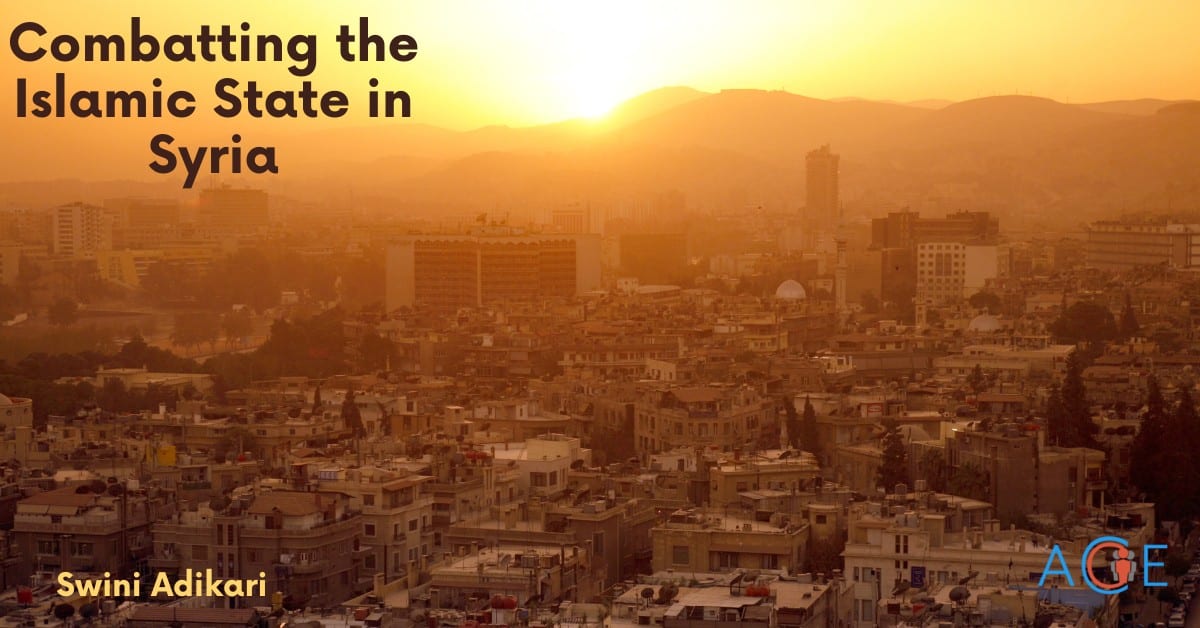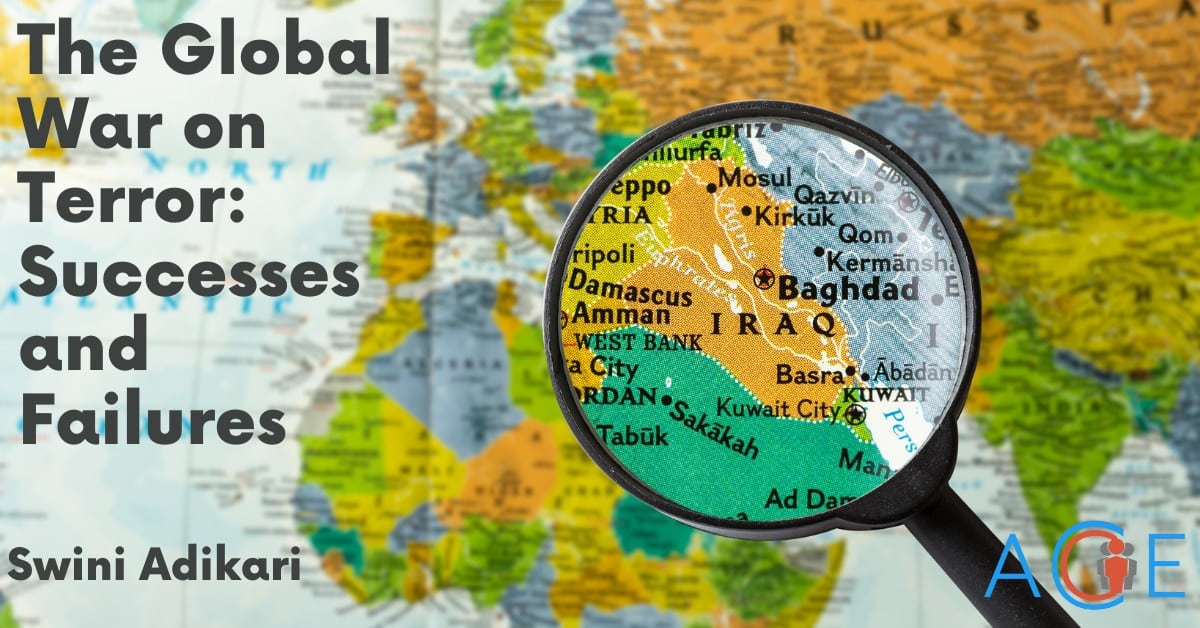Introduction
The Islamic State in Iraq and Syria (ISIS) is a Sunni jihadi group that seeks to establish a global caliphate and claim religious authority over all Muslims. The Islamic State has taken advantage of the instability and violence under the Assad regime in Syria and continues to mount attacks in the region despite the defeat of the caliphate in 2018. Apart from carrying out attacks in the region, the militant group exploits refugee conditions in Syria to radicalize and recruit individuals for its resurgence. Counter-terrorism and deradicalization efforts essential steps to combat the resurgence of the Islamic State in Syria.
Rise of the Islamic State
The Islamic State, also known as the Daesh, emerged from the remnants of Al Qaeda in Iraq (AQI), a local affiliate of Al Qaeda under the leadership of Abu Musab al Zarqawi. With the start of the Arab Spring and the growing instability and violence in Syria, AQI grew to carry out attacks and bolster its strength and expand its caliphate to Syria to establish a fundamentalist Sunni Muslim state in Greater Syria. In June 2014, Abu Bakr al-Baghdadi changed the group’s name to ISIS and formally declared the ISIS caliphate.
The militant group’s ideology stems from Salafism and seeks to establish an Islamic caliphate based on a fundamentalist interpretation of Sharia (Islamic Law). The group developed a global jihad network by expanding to different geographic areas and establishing affiliates in Libya, the Sinai Province, Afghanistan, West Africa, and the Greater Sahara. They have further expanded affiliates into Congo, Mozambique, Philippines and Bangladesh. The primary targets of the Islamic State include the West and regimes in the Arab world which it does not view as upholding Islamic values. The Islamic State’s primary strategy includes territorial control and expanding its position in the world.
The Islamic State’s preferred attack types are a reflection of the tactics evolved from the civil wars in Syria and Iraq. In the height of their strength, the militant group deployed artillery, massed forces, and tanks to expand territorial holdings. In the territories that they do hold, they have carried out public executions, rape, and symbolic crucifixions to terrorize the populations into submission.
Islamic State’s Current Presence in Syria
Presently, the Islamic State continues to be active in the regime-controlled territory in the Syrian desert and Syrian Democratic Force (SDF)-controlled northeast. Attacks include small-arm assaults, ambushes, roadside bombings, kidnappings, and acts of sabotage. According to the United Nations, there are presently approximately 10,000 Islamic State fighters across Iraq and Syria. The militant group faces a more challenging operating environment than before in light of Assad’s resurgence as well as the presence of international forces.
One of the most significant concerns is the radicalization occurring within the al Hol detention facilities in SDF-controlled territory. The camp holds approximately 60,000 men, women, and children that have links with the Islamic State, and remains a site of recruitment and radicalization. Recently, the Islamic State mounted an attack on a prison in Northeastern Syria that held Islamic State fighters. U.S.-backed SDF forces fought the Islamic State fighters for 10 days, eventually retaking the prison—but not before the escape of approximately 100 Islamic State prisoners.
In February 2022, the U.S. carried out a covert operation in February that resulted in the death of the former leader of the Islamic State, al Qurayshi. This special operation demonstrated a high degree of sophistication in U.S. intelligence and counter-terrorism operations. While it was a significant blow to the terrorist organization, it is unlikely to change the Islamic State’s current trajectory.
Past U.S. Policies to Combat the Islamic State in Syria
In 2014, the U.S. The Department of Defense (DoD) established the Combined Joint Task Force – Operation Inherent Resolve (CJTF – OIR) to combat the Islamic State in Iraq and Syria. The aim of this operation was to advise, assist, and enable partnered forces in the defeat of the Islamic State.
Under CJTF-OIR the U.S. adopted a limited liability and limited risk strategy to defeat the Islamic State. This included air power, which played a crucial role in the defeat of the global caliphate in 2018. The U.S. and partner nations used precision strikes which eventually affected the militant group’s ability to control resources through its oil business in Syria. Airpower also played a critical role in gathering intelligence on the group’s whereabouts and resources. Overall, airpower played an essential role in blunting the Islamic State’s momentum in Syria, targeting its cash resources, and countering vehicle-borne improvised explosive device attacks in Mosul. Combined, these operations eliminated the militant group’s hold on large swaths of territory in Syria which was crucial to the caliphate’s survival.
Under CJTF-OIR, the DoD also focused on training, equipping, and advising local forces in Syria—namely, the U.S. backed Syrian Democratic Forces which played a significant role in the defeat of the Islamic State in Kobani and Raqqa. In 2019, the U.S.-backed SDF forces besieged the Islamic State in Baghouz which was the Islamic state’s last territorial enclave, ending the Islamic State’s caliphate in Iraq and Syria.
Continued U.S. Policies to Counter the Islamic State in Syria
The U.S. is likely to continue its multilateral counter-terrorism efforts to diminish any resurgence of the Islamic State. Developing a comprehensive security plan to reassess ISIS’s threat capabilities in the Northeast of Syria is vital to counteract any resurgence. This includes gathering cross border intelligence-sharing between the colaution, SDF and Iraqi authorities. In addition, the U.S. can provide more security personnel and technical equipment to secure prison systems that house former jihadi fighters. These measures can cause significant blows to the resurgence of the Islamic State and prevent former jihadi fighters from re-joining the Islamic State.
In addition, the U.S. may address the sources of Islamic State resilience. This includes countering the radicalization occurring within the refugee camps in al-Hol. This would include a combined effort from the U.S. and allied nations to develop rehabilitation centers to de-radicalize individuals. This measure will address the grievances that factor into radicalization and address the pathways to de-radicalization. However, there are significant challenges to the implementation of this policy. It requires cooperation by the Assad regime to house individuals within rehabilitation centers in Syria, which would mean normalizing relations with a regime responsible for war atrocities.


